Monsoon mayhem claims 234 lives
Thousands displaced, dozens still missing
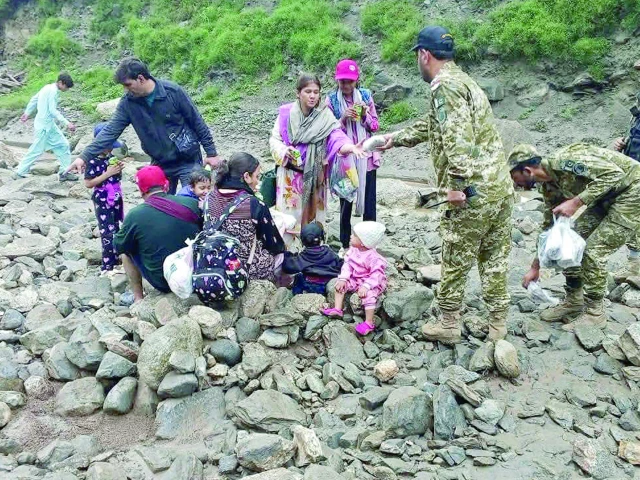
As the monsoon fury lays waste to country, the devastating impact of rains and flash floods have claimed at least 234 lives, left 596 injured and damaged 826 homes since June 26, according to the latest figures released by the National Disaster Management Authority (NDMA).
Moreover, two men, two women and eight children were the latest to lose their lives in rain-related incidents over the past 24 hours on Tuesday, while ten others sustained injuries.
The unrelenting downpour has also resulted in the death of 203 livestock, displacement of families and disruption of critical infrastructure nationwide.
Over 62 rescue operations have been carried out so far, with 450 people rescued, while 27 relief and medical camps have been established to support those affected.
The NDMA warns that the threat is far from over, as further heavy rainfall is forecast across northern and hilly regions, raising serious concerns over urban flooding, landslides, mudslides and glacial lake outburst floods (GLOFs) in Gilgit-Baltistan (G-B) and Khyber Pakhtunkhwa (K-P).
Five dead in Babusar
Meanwhile, at least five people, including four tourists and a local, lost their lives, while over a dozen remain missing in Babusar, according to Diamer Deputy Commissioner Atta-ur-Rehman.
The tragic incident struck on Monday when a cloudburst triggered flash floods along the scenic route.
The floods swept away over 30 vehicles, completely destroying 10 to 15 of them and rendered 7 to 8 kilometres of Babusar Road impassable.
Four connecting bridges, two mosques and more than 50 houses were also destroyed, while fibre optic and electricity lines were damaged, cutting off communications. Tourists in Thak and Babusar lost contact with their families.
Rescue operations were initially hampered by nightfall but resumed at dawn. Over 200 stranded tourists have been rescued and brought to Chilas, where hotels have been opened free of cost.
Local residents played a crucial role in the relief efforts, alongside the Pakistan Army, which deployed helicopters and troops to evacuate tourists and deliver food and medical aid.
Children among the most affected
The breakdown of casualties paints a grim picture of the devastation caused by rain-related incidents across the country, with children emerging as the most vulnerable victims.
Punjab has been the worst-hit province, reporting a staggering 135 deaths, including 48 men, 24 women, and 63 children, along with 470 injuries. The high number of child fatalities underscores the severe toll the recent downpours have taken on young lives.
In Khyber-Pakhtunkhwa, 56 people have lost their lives, comprising 16 men, 10 women and 30 children. Another 71 individuals have been injured in the province.
Sindh has recorded 24 deaths and 40 injuries, while Balochistan has reported 16 fatalities and four injuries due to rain-related incidents.
Azad Jammu and Kashmir (AJK) has confirmed two deaths and eight injuries, whereas Islamabad Capital Territory has reported the tragic death of a child.
Gilgit-Baltistan, although spared fatalities, has reported three injuries.
The NDMA data shows that a majority of the 596 injuries nationwide involved children, women, and elderly persons, highlighting the disproportionate impact on already vulnerable groups as the rains continue to wreak havoc.
Individual tragedies compound the crisis
Meanwhile, in Swat, five children were killed in separate rain-related incidents.
In Malam Jabba's Sur Dherai, two young boys drowned while crossing a stream with their mother. Elsewhere in Gujar Band Shanko, a house collapse due to rain killed three children and critically injured a woman.
In Islamabad, a retired official and his 25-year-old daughter drowned after their car was swept away by floodwaters in Phase 5 of a private housing society. The vehicle had stalled on a flooded road, and both were carried into a drainage canal before rescue teams could intervene.
In response to the widespread devastation, the disaster management authority has stepped up relief operations by dispatching a total of 3,349 essential items to affected regions.
Among the aid sent are 349 tents, 358 blankets, 500 sandbags and 554 kitchen sets to help families find shelter and manage basic household needs in temporary conditions.
To ensure comfort and protection, the NDMA has also distributed 266 quilts, 76 mattresses, 305 mosquito nets and 88 tarpaulins.
For sustenance and immediate survival, 153 food packs have been provided, along with 201 gas stoves to facilitate cooking. To manage water accumulation and rescue efforts, 95 dewatering pumps and three rescue boats have also been deployed.
Additional supplies, including life jackets, hygiene kits, plastic mats and jerry cans, are being delivered to support thousands of displaced citizens as relief efforts continue across the country.
Heavy rains to continue
The Pakistan Meteorological Department (PMD) has issued high-level warnings for continued heavy to very heavy rainfall across Punjab, K-P, G-B, AJK, Islamabad and Kashmir.
Torrential rain on July 22 may cause flash floods in streams and nullahs, particularly in northern areas like Swat, Dir, Kohistan, Abbottabad and Murree.
Urban flooding remains a threat in Islamabad, Rawalpindi, Lahore, Gujranwala, and other major cities. Landslides are likely in Murree, Galliyat, Chitral and Hunza, with several high-risk points identified along key highways and glacial zones.
The NDMA's National Emergencies Operation Centre (NEOC) has advised all provincial authorities, rescue services and humanitarian partners to stay on high alert.
Citizens are urged to follow instructions and download the NDMA Disaster Alert App for real-time updates.
GLOF and landslide risks rising
The PMD has also warned of a heightened risk of glacial lake outburst floods (GLOFs) in GB and KP, with potential flooding in valleys such as Skardu, Hunza, Astore, Diamer and Neelum.
The continued wet spell could exacerbate slope destabilisation, leading to rockfalls, mudslides and ground subsidence, further endangering lives and blocking access to remote areas.



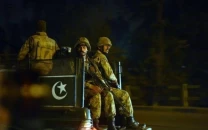

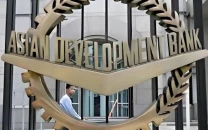




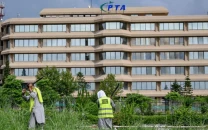

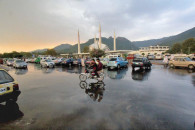





COMMENTS
Comments are moderated and generally will be posted if they are on-topic and not abusive.
For more information, please see our Comments FAQ